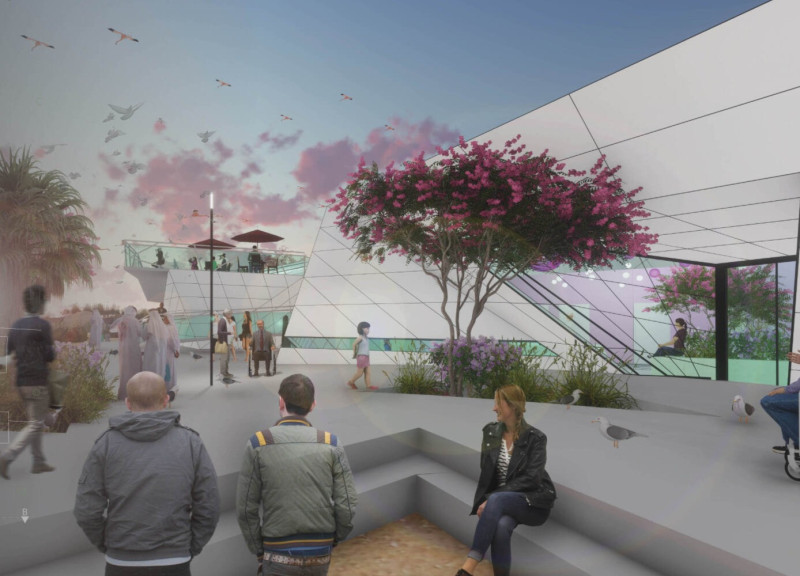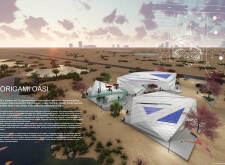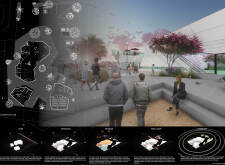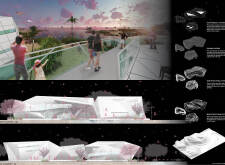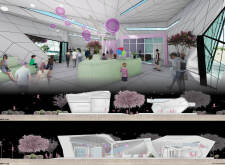5 key facts about this project
The architectural design incorporates several interrelated volumes that mimic the folded structures of origami. This choice not only enhances visual interest but also encourages dialogue between the built environment and the surrounding wetlands. The project functions as a hub for ecological tourism, providing facilities that facilitate visitor engagement with local wildlife and habitat awareness.
Sustainable Design Elements
The integration of sustainability principles is a key aspect of "Origami Oasi." Metal panels form the primary exterior, reflecting light and emphasizing the folding design motif. Large expanses of glass are strategically placed to allow ample natural light into the interiors while offering views of the landscape, promoting an immersive experience for the visitors. Concrete provides structural stability, serving as a robust foundation for the entire design.
In addition, the incorporation of solar panels plays a crucial role in minimizing the facility's carbon footprint. This demonstrates a commitment to environmental responsibility and energy efficiency, aligning with contemporary architectural practices aimed at sustainability.
Innovative Spatial Configuration
The internal layout is designed to promote flow and accessibility. Visitors are welcomed through multiple entrances, each providing distinct perspectives of the surrounding natural beauty. Central to the design is a plaza that serves as a focal point, connecting the various elements of the centre and fostering an interactive experience with the landscape.
The roof terrace is a unique feature, offering panoramic views of the wetlands and inviting visitors to reflect on the ecosystem. The landscape design complements the architecture with native flora and integrated seating areas that enhance visitor comfort and engagement with the environment.
The "Origami Oasi" project sets itself apart through its delicate balance of organic forms, functional spaces, and ecological awareness. It serves not only as a visitor centre but also as a platform for educating the public on the importance of biodiversity and conservation.
Exploring further into the project presentation will reveal more about the architectural plans, sections, and detailed design ideas that underscore its innovative nature. This exploration can provide deeper insights into how the project effectively bridges architecture and nature, enhancing its role within the region’s ecological framework.


